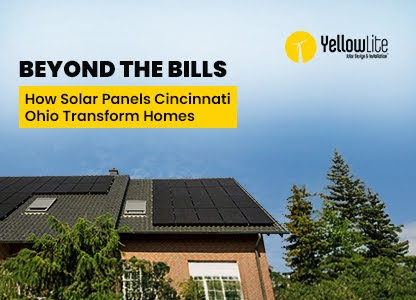In 2025, businesses across Ohio are facing a simple but serious question: how long can they afford to stay vulnerable to rising utility costs and energy market volatility?
For business owners managing retail stores, warehouses, manufacturing plants, schools, and office buildings, the pressure is mounting. That is why solar energy for power generation is no longer just an environmental talking point; it is a financially sound, future-proof strategy that directly impacts the bottom line.
Commercial entities are discovering that investing in commercial solar panels is one of the smartest moves they can make this year. In this quick guide, we explain how.
Why Businesses Choose Solar Energy for Power Generation
Every dollar spent on electricity is a dollar not invested back into the business. With energy prices steadily climbing, locking in predictable costs has become a financial necessity. Solar energy for power generation allows businesses to turn a once-volatile expense into a stable, long-term asset. By installing a commercial solar panel system, companies can reduce monthly utility bills by 40 to 70 percent depending on system size and facility usage.
Most commercial solar panel systems in Ohio deliver a payback period between 4 to 7 years. Once that threshold is crossed, businesses enjoy decades of virtually free power. Considering that solar panels typically last 25 years or more, the cumulative savings from commercial solar panel can reach hundreds of thousands of dollars over the system's lifespan.
Beyond cost savings, commercial solar panel installations enhance property value and provide a powerful sustainability narrative that resonates with customers, employees, and stakeholders.
EIA – 2025 Market Update
The Energy Information Administration anticipates 63 GW of utility-scale generation capacity will be brought online this year, and 81% of that capacity will be solar and battery Storage.
In 2024, generators added a record 30 GW of utility-scale solar to the US grid, accounting for 61% of capacity additions last year. In 2024, power providers added a record 10.3 GW of new battery storage capacity. EIA projects this growth to almost double to 18.2 GW in 2025.
How Much Power Can Commercial Solar Panels Generate?
One of the most common questions business owners have is: how much electricity can a commercial solar panel system realistically produce? Typical system sizes for commercial applications range from 50 kilowatts (kW) for small facilities to 500 kW or more for large-scale operations. A 100 kW system can produce approximately 120,000 to 140,000 kilowatt-hours (kWh) annually in Ohio.
For many businesses, this translates into thousands of dollars saved every month. Depending on the size of the system and the business’s energy usage, monthly savings can range from $1,500 to $10,000. Adding battery storage allows businesses to further optimize savings by using stored energy during peak utility rate periods or during outages, offering both cost control and operational resilience.
Want to know how much power your business needs? Check out our solar power calculator.
Custom Commercial Solar Panel for Your Business Needs
At YellowLite, no two commercial solar panel systems are identical. Each design is customized to match the specific needs and future plans of your business. For example:
- Retail facilities may require roof-mounted systems to preserve parking lot space.
- Manufacturing plants often have high continuous loads, requiring larger system sizes.
- Office buildings and schools may benefit from ground-mounted systems when roof space is limited.
Beyond the current energy profile, YellowLite’s team factors in your business’s long-term growth to ensure the system can scale as energy needs evolve.
Top Benefits of Commercial Solar
- Protects Against Rising Energy Costs
Locks in predictable energy rates for decades, shielding your business from unpredictable utility price hikes. - Ensures Operational Resilience
Provides backup power during grid failures and extreme weather events, keeping essential systems running without interruption. - Supports Business Continuity
Prevents costly downtime for healthcare facilities, data centers, manufacturing plants, and schools where consistent power is critical. - Maximizes Efficiency with Solar Plus Battery
Enables peak load management and optimizes energy use during high-cost utility periods by pairing solar energy for power generation with battery storage. - Demonstrates Leadership in Sustainability
Strengthens your company’s environmental commitments and enhances brand reputation among customers, employees, and investors. - Future-Proofs Operations
Positions your business to adapt confidently to evolving energy regulations, carbon mandates, and sustainability standards.
Tax Incentives: 30 Percent Federal ITC and More
One of the strongest financial arguments for adopting solar energy for power generation in 2025 is the availability of lucrative tax incentives. The federal government currently offers a 30 percent Investment Tax Credit (ITC) for commercial solar panel systems. This means that nearly one-third of your project cost is immediately covered through federal tax savings.
Additionally, businesses can accelerate depreciation through the Modified Accelerated Cost Recovery System (MACRS), further reducing taxable income in the early years of the investment. Many Ohio businesses may also qualify for state-level incentives, utility rebates, and grant opportunities that stack additional savings on top of federal programs.
These combined incentives significantly reduce the upfront capital requirement, making solar energy for power generation financially accessible to businesses of all sizes.
Success Story:
Sirna & Sons Produce
453 kW Commercial System
- Federal Tax Bracket: 35.0%
- Location's Avg Peak Sun Hours: 4.2 (Cleveland area at 10° tilt)
- Estimated Annual Production: 544,165 kWh/yr
- Starting Average Utility Rate: 10.5 ¢/kWh
- List System Installed Cost ($1.80 per Watt) $813,212
- Federal 30% Investment Tax Credit -$243,964
- MACRS 5 yr Accelerated Depreciation -$270,739
- System Cost After Tax Incentives (34.8%) $298,510
Starting Average Utility Rate: 10.5 ¢/kWh with 4% annual increase. System Cost After Tax Incentives $298,510

Sirna & Sons Produce
Electric Utility Savings
- First year: $59,858
- 25-Year Cumulative Net Savings: $1,349,054
- Total Lifecycle Payback 4.5 times net cost
- Property Value Increase with 6% Cap Rate $970,000
Payback 6.9 yrs. IRR over 25 years is 11.9%
Why Choose YellowLite as Your Commercial Solar Partner
Choosing the right solar partner is just as critical as choosing solar itself. YellowLite brings unmatched expertise to every project:
- NABCEP-certified installers ensure the highest technical standards.
- Over 15 years of experience delivering successful commercial solar panel projects across Ohio.
- Fully customized engineering designed for maximum system performance and scalability.
- Long-term service, maintenance, and support to protect your investment for decades to come.
With YellowLite, your business gains a true partner committed to delivering both immediate savings and lasting value.
Key Takeaway
For Ohio business owners, facility managers, and sustainability officers, 2025 represents a pivotal moment. Solar energy for power generation offers a rare combination of financial returns, operational stability, and environmental leadership.
The decision to invest in commercial solar panels today creates a resilient, cost-controlled, and market-differentiating advantage for decades to come.
Frequently Asked Questions
1. How much can my business save with solar energy for power generation?
Savings typically range from 40 to 70 percent off your current utility bills depending on system size, facility energy usage, and available incentives.
2. How long does it take to see ROI on a commercial solar panel system?
Most businesses achieve full payback within 4 to 7 years, with savings compounding for the remaining 20-plus years of system life.
3. Does solar energy for power generation work in Ohio's climate?
Yes. YellowLite designs commercial solar panel systems that perform efficiently in Ohio’s seasonal conditions, generating strong year-round output.
4. What tax incentives are available for commercial solar panel installations?
Businesses can claim a 30 percent Federal Investment Tax Credit (ITC), MACRS accelerated depreciation, and may qualify for additional state and utility incentives.
5. Can commercial solar panel systems be expanded later if my business grows?
Absolutely. YellowLite designs scalable systems that can be expanded or paired with battery storage to meet evolving energy needs.




